The content of the article
- 1 Rule number 1. Regularly audit
- 2 Rule number 2. Operate the refrigerator correctly
- 3 Rule number 3. Choose a suitable container for food storage.
- 4 Rule number 4. Observe the storage time.
- 5 Rule number 5. Stick to temperature
- 6 Rule number 6. Distribute products to the appropriate shelves.
- 7 What foods should not be stored in the refrigerator
- 8 Video: rules for storing food in the refrigerator
As a result of violation of the terms and temperature conditions, many housewives are forced to get rid of some of the products during the audit. In order for the components to retain all the beneficial properties and remain as tasty as possible, it is necessary to have sufficient knowledge regarding their contents on the shelves. We can not allow questionable expenses, which later will be moved to the trash bin. Consider the basic aspects, we highlight the main thing.
Rule number 1. Regularly audit
- At frequent intervals it is necessary to clean the refrigerator of excess products.The recommendation does not push you to get rid of half of the content, it is enough to exclude the damaged copies. The essence of this rule is to throw out spoiled products that emit an unpleasant smell in time.
- By conducting a timely audit, you will get rid of moldy products, thereby increasing the space for other foods. In addition, a similar move makes it easier to control leftovers.
- Not many people know that the more food is in the refrigerator, the stronger the household appliance consumes electricity. You will save money on utility fees.
- To proceed with the audit, unload all products on the kitchen table. If there are perishable items, move them to the cold on the balcony or in the second refrigerator.
- Perform an audit, evaluating the suitability of each component. Check the shelf life and shelf life on products with a label. It is important to note that in supermarkets, managers have the audacity to interrupt the dates, thereby reducing the shelf life by 5-7 days.
- For this reason, it is recommended not only to build on the printed numbers, but also to conduct a visual inspection.Also smell milk and other products that can be excluded from the list of good food in a similar way.
- If you notice that the expiration date is not violated, but the products emit an unpleasant smell, send it to the trash. The same applies to color, the presence of mold, etc.
- There are often cases when expiration dates, on the contrary, are violated, but the products are fresh enough and smell good. In such situations, it is allowed to leave the expired goods for another day (at your own risk).
- If products have expired by 2-4 days, throw them out without hesitation. Otherwise, there will be a risk of poisoning yourself and other family members. Also, do not cook on the basis of these components of food for pets.
- Try to adhere to the following rule: first eat perishable foods, add them to dishes with the main components.
- Many housewives prefer to freeze ready meals, thereby retaining useful properties. You can even send soup and borscht to the freezer; after warming up, the taste qualities will not change.
Rule number 2. Operate the refrigerator correctly
The manufacturer’s manual clearly states the manufacturer’s recommendations regarding the storage of certain products. It is important to observe everything to the smallest detail, otherwise the household appliance will quickly become unusable.
- All manufacturers in one voice say that it is prohibited to store hot dishes (just cooked) in the cavity of the refrigerator. Before you send them inside, cool the food to room temperature naturally.
- To avoid fluctuations in temperature, moisture loss and general overheating of the household appliance, it is recommended to tightly close the door of the refrigerator. Regularly inspect seals for defects and, if necessary, replace them with new ones.
- Even if you are the owner of a refrigerator with the system "No Frost" (does not require defrosting), you still need to defrost it. Of course, the procedure is carried out less frequently (1 time in 10-12 months), but it takes place.
- Manufacturers recommend storing notched vegetables and fruits in a special container or wrapping them with food film. If you have not eaten some of the watermelon, melon, cut a tomato or a cucumber, wrap the residue in plastic.Otherwise, when cooled, the listed products will release condensate, which will affect the internal components of the device.
- The manufacturer’s advice includes the revision mentioned above. It must be carried out 1 time in 5-7 days, it all depends on the volume of the refrigerator. During the audit, do hygienic cleaning, wiping all shelves, trays, seals and small parts with soda solution.
Rule number 3. Choose a suitable container for food storage.
When it comes to food storage, many housewives ask themselves: “What are the products to keep?”, And this is not surprising. Shops are full of various containers, vacuum bags, cans, etc.
- Thanks to the right packaging, food will retain its flavor and taste for a long time. Smells of nearby dishes will not intertwine, soaking into the cavity of the “neighbor”. It is known that many products have the unpleasant property of bleaching. The container or package will not allow this, preserving the original appearance.
- Upon arrival from the hypermarket, get all the products, put them on the table. Remove plastic bags that are intended for transportation, not storage.Use clean food bags to put fruits and vegetables in them. Put the rest of the ingredients in a new package.
- Purchase plastic food containers that are designed specifically for food storage. According to them it is necessary to sort the finished salads, cheese, butter, berries. Also, many housewives prefer to use these boxes to freeze vegetables and fruits.
- With regard to the storage of sausages, sausages, smoked meat and other things, use foil or baking (parchment, food) paper. This type of packaging will prevent the formation of sticky whitish plaque. Cheese or sausage slices, butter, ready-made main dishes and side dishes are packed in the same way.
- There is another option for storing food in glassware, it is suitable for almost all products. If possible, purchase beautiful cans and bottles with hermetic closures at IKEA. Pour dairy products into them after opening the original packaging.
- There are also special glass containers, they are suitable for storing open canned goods, butter, cheese, cottage cheese, ready first and second courses, salads, desserts.In the original package may contain chicken / quail eggs (raw), sour cream, refined vegetable oil.
Rule number 4. Observe the storage time.
Not every product specifies the shelf life, for this reason many housewives are lost in conjecture. To make a shopping list and monitor stocks, you need to know the allowable duration of exposure of an ingredient.
- The generally accepted storage standards vary depending on the fat content of the composition. For example, an open ketchup can not be held longer than 10 days, after this period it begins to release toxins. At the same time, fatty mayonnaise is stored in the open state for a month.
- Sausages, smoked meat and ham begin to deteriorate in a week. Raw meat is stored no longer than 4 days, ready minced meat - about two days. Fish, whatever it is, has a limited period of 2 days, quail and chicken eggs 6 days, boiled meat 3 days.
- The long storage time for hard cheeses is 20 days. When white plaque appears, it is enough to cut off the neoplasms. Butter is aged for about a month, fresh vegetables and fruits - 21 days, condensed milk, milk and kefir - 6 days.
- Berries can be stored no longer than 5 days, parsley, dill and other greens - 3 days.These products can be frozen by extending up to six months. Virtually any berries, fruits and vegetables are frozen except for watery varieties (tomato, radish, cucumber, potatoes, watermelon, etc.).
Rule number 5. Stick to temperature
Each compartment of the refrigerator has a certain temperature regime, it must be taken into account. To determine at what rate the food will retain its beneficial properties, stick to approximate marks.
- Vegetables and fruits are stored at 4 degrees above zero, while confectionery and bakery products without cream retain taste at +3. Cheese, sausages, smoked meat is kept at a temperature of +2 degrees.
- If we talk about eggs, sour cream, milk, cottage cheese, meat and sauces, they must be stored at a mark of 1 degree above zero. The fish is stored at zero temperature, ready first and second dishes - at +2.
Rule number 6. Distribute products to the appropriate shelves.
Each shelf of the refrigerator has its own temperature regime, for this reason it is necessary to distribute products with this feature in mind.
- Sausage and cheese cutting, ham, jelly, stored on the top shelfpastry with custard. Also here you can put raw meat and fish, moving them to the far wall.
- On the middle and lower shelves you can put the first dishes, stewed vegetables and meat, wine (red, white). Vegetables and fruits are stored strictly in plastic boxes at the very bottom. At the same time they must be packaged in packages.
- The door of the refrigerator is not stable temperature, so you can store sauces, butter and vegetable oils, canned food, packaged drinks, canned food, marinade.
What foods should not be stored in the refrigerator
- The refrigerator is not considered a panacea for products of all kinds, many components are perfectly stored at room temperature. These include clogged homemade pickles, jams, canned goods, candy and chocolate.
- Do not place citrus fruits in the cold. Lemons, oranges and grapefruits quickly deteriorate, bananas blacken.
- At room temperature it is worth keeping potatoes, onions and garlic, pumpkin, pomegranates and persimmon, tomatoes, eggplants, and zucchini.
- Some types of domestic fruit also should not be exposed to cold. From them we will select apples, pears, grapes, peaches.
- Olive oil, honey, chili pepper sauces, bread are not stored in the refrigerator (freeze it as much as possible).
Proper storage of food in the refrigerator will allow you to get maximum benefit from food and save the family budget. Regularly audit, exclude spoiled ingredients. Operate the device correctly, select the appropriate container for each type of product. Observe the temperature regime, take care of food containers.
Video: rules for storing food in the refrigerator

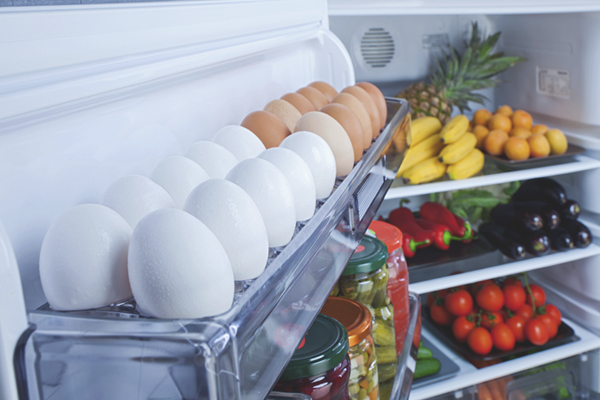

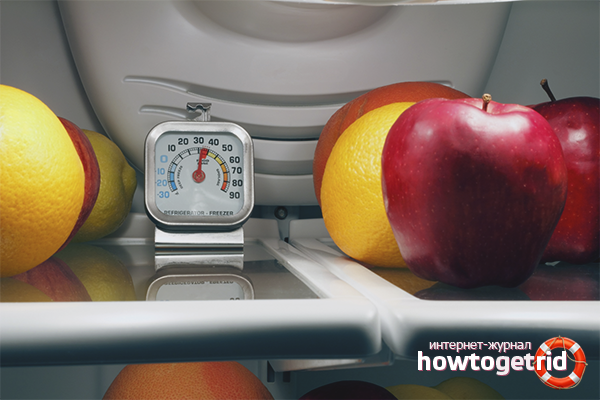

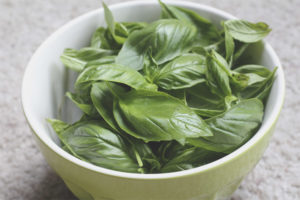

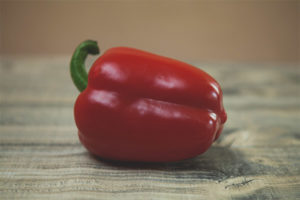

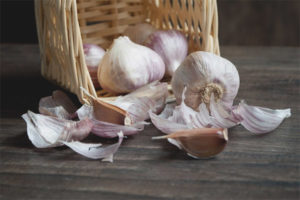

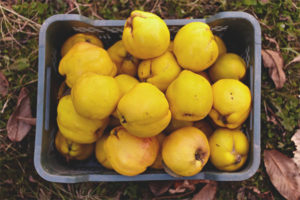

To send